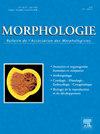Knowledge of gross human anatomy among Brazilian physical education students: A cross-sectional study
Q3 Medicine
引用次数: 0
Abstract
Background
Gross human anatomy is essential in undergraduate programs across biological and health sciences. While extensive literature explores medical students’ knowledge in this area, studies on non-medical students, particularly those in physical education, are scarce.
Objective
This study assessed the anatomy knowledge among Brazilian physical education students and explored differences based on employment status, type of class instruction (face-to-face vs. online), and involvement in academic activities. Additionally, we investigated students’ perceptions of the assessment instrument and the gross human anatomy course itself.
Methods
We conducted a cross-sectional study involving physical education students of both sexes, aged 18 and older, from four public Brazilian universities. Participants completed a 15-question multiple-choice survey on human anatomy systems. Correct answers received one point, with a total potential score of 15 points (100%). We categorized scores as excellent (≥ 90%), good (71–89%), sufficient (50–70%), and insufficient (< 50%). Participants had 90 minutes to complete the survey. We presented data as median and interquartile range [IQR], median difference (Δ), and 95% confidence intervals. Scores were compared against the median absolute (7.5 points) and relative (50%) values. We used rank-biserial correlation for effect size and set a significance level 0.05. The study included 216 students (143 males) with a median age of 22.4 years [IQR: 4.0].
Results
The final scores were significantly above the cut-offs, with a median absolute score of 9.0 [IQR: 3.0] and a relative score of 60% [IQR: 20%], showing large effects (Δ: +2.0 [1.5–2.0], P < 0.001; Δ: +13.33% [10.0–13.34%], P < 0.001). There were no significant differences in either the absolute or relative final scores (P ≥ 0.05) between students who participated in academic activities and those who did not, nor between students who attended face-to-face versus online gross human anatomy classes. However, we found a significant difference between non-working students and their employed counterparts, with non-workers scoring higher both absolutely (P = 0.002) and relatively (P = 0.002) on the gross human anatomy questionnaire. Most of the participants described the difficulty of the gross human anatomy questionnaire as “average” (51.39%, n = 111) and rated the gross human anatomy course difficulty as “difficult” (52.8%, n = 114).
Conclusion
Brazilian physical education students demonstrated only sufficient knowledge in gross human anatomy (60%). Therefore, strategies to enhance or maintain their knowledge throughout the educational program are vital.
巴西体育学生对大体人体解剖学的了解:一项横断面研究。
背景:大体人体解剖学在生物和健康科学的本科课程中是必不可少的。虽然大量文献探讨了医学生在这方面的知识,但对非医学生,特别是体育专业学生的研究却很少。目的:本研究评估了巴西体育专业学生的解剖学知识,并探讨了基于就业状况、课堂教学类型(面对面与在线)和学术活动参与程度的差异。此外,我们调查了学生对评估工具和大体人体解剖学课程本身的看法。方法:我们进行了一项横断面研究,涉及来自巴西四所公立大学的18岁及以上的男女体育学生。参与者完成了一项关于人体解剖系统的15道选择题调查。答对1分,满分15分(100%)。我们将得分分为优秀(≥90%)、良好(71-89%)、充分(50-70%)和不足(结果:最终得分显著高于临界值,绝对中位数得分为9.0 [IQR: 3.0],相对得分为60% [IQR: 20%],效果显著(Δ: +2.0[1.5-2.0])。结论:巴西体育专业学生仅表现出对人体大体解剖学的充分了解(60%)。因此,在整个教育计划中提高或保持他们的知识的策略至关重要。
本文章由计算机程序翻译,如有差异,请以英文原文为准。
求助全文
约1分钟内获得全文
求助全文
来源期刊

Morphologie
Medicine-Anatomy
CiteScore
2.30
自引率
0.00%
发文量
150
审稿时长
25 days
期刊介绍:
Morphologie est une revue universitaire avec une ouverture médicale qui sa adresse aux enseignants, aux étudiants, aux chercheurs et aux cliniciens en anatomie et en morphologie. Vous y trouverez les développements les plus actuels de votre spécialité, en France comme a international. Le objectif de Morphologie est d?offrir des lectures privilégiées sous forme de revues générales, d?articles originaux, de mises au point didactiques et de revues de la littérature, qui permettront notamment aux enseignants de optimiser leurs cours et aux spécialistes d?enrichir leurs connaissances.
 求助内容:
求助内容: 应助结果提醒方式:
应助结果提醒方式:


